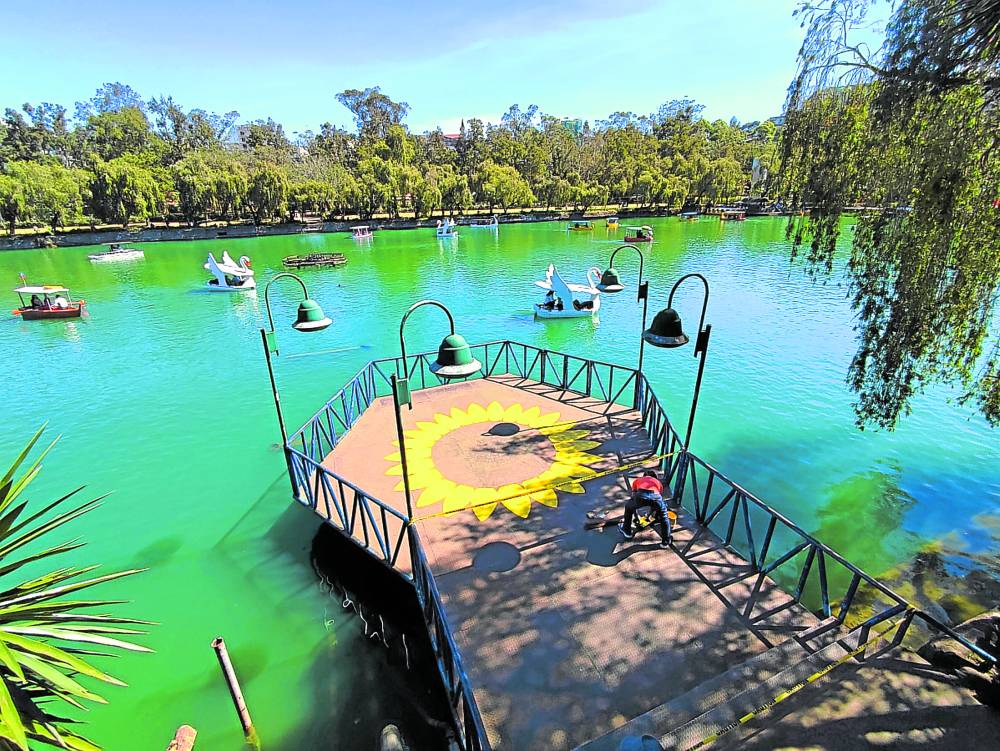
BLUE AND COLD Burnham Lake in Baguio City turns bluish after its water is treated using organic algaecide by the local government to clean the century-old attraction in this photo taken on Tuesday. Tourists and residents on Friday experienced the coldest morning in the summer capital this year. —NEIL CLARK ONGCHANGCO
BAGUIO CITY—Residents here dug up their thickest sweaters on Friday when the mercury dropped to 10 degrees Celsius early in the morning, according to the state weather bureau.
The low temperature, which was recorded at 5 a.m., was the city’s coldest this year and since the amihan, or northeast monsoon, began in October last year, data from the Philippine Atmospheric, Geophysical and Astronomical Services Administration showed.
By 8 a.m., the city temperature still lingered at 10.2 C, prompting residents and tourists to bundle up to avoid catching a cold.
Coldest day
The seasonal Baguio cold normally creeps in during the Yuletide, but the city’s temperature usually drops between 10 C and 12 C between January and February, when the local government stages its annual Panagbenga Flower Festival.
This week, the city’s temperature dipped between 12 C and 15 C, including 13.4 C on Valentine’s Day, which was down from 15.7 C on Monday.
Baguio’s coldest day on record is Jan. 16, 1961, when temperatures dropped to 6.3 C, given that it is the country’s highest city. That record has not been broken, although it came closest in 2017 when temperatures dropped to 8 C in February 2017, and 9 C in February 2021, according to news archives.
Crowd drawer
Historically, the chilly weather is what repeat tourists seek out, according to Aloysius Mapalo, city tourism officer, in an earlier interview.
This week, the city has been packed with tourists and the participants to the alumni homecoming of the Philippine Military Academy, which is scheduled for Saturday.
Data on the number of tourist arrivals this year was not immediately available after the city government’s COVID-19 tracking platform that tallied every Baguio guest at the border has become a travel application.
But toward Christmas last year, Mapalo estimated that Baguio had been hosting over 150,000 visitors each month.

